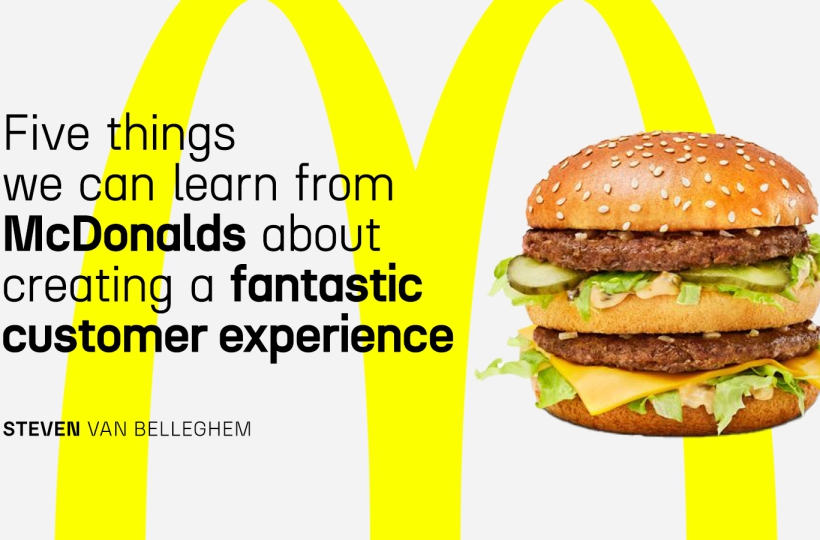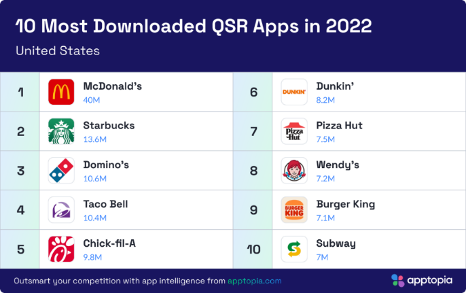5 thing we can learn from McDonalds about creating a fantastic customer experience

Find the perfect balance between consistency & adaptation
The McDonalds food experience is probably one of the most consistent around the globe. Anywhere in the world, if you crave something recognizable, something familiar, you can enter a McDonalds and find exactly what you expect and want. The same burgers, the same drinks, the same deserts, the same atmosphere, the same cleanliness and convenience. Especially in these uncertain and often difficult times, there is a lot of value in that comfort, even though consistency obviously does not sound as ‘sexy’ as innovation.
But there also needs to be a balance between the two, between tradition, recognizability on the one hand and adaption, evolution on the other. McDonalds excels at both. It keeps innovating with new menu items and keeps revamping existing ones to match changing tastes. For instance, they have incorporated healthier and vegetarian options and customizable meals to cater to a wider audience, including those with dietary restrictions or preferences. Next to the classic menu items found anywhere in the world, it also tailors its menu and marketing efforts to suit the tastes and preferences of customers in different regions with locally-inspired menu items. They had McSpicy Paneer in India, for instance, and a Kaprao Crispy Chicken with rice (not a burger) in Thailand.
Above all, even though there is some experimentation on their menu, the most advanced innovation at McDonalds is service-oriented rather than product-focused. Most of all, they are continuously looking for ways to find and remove friction.
Keep chasing friction and remove it
They probably invest the most innovation in making their service as fast and frictionless as possible, with all kinds of very convenient tech interfaces that are designed to save the most valuable resource of their customers: time.
The self-service kiosks are the most obvious examples here, of course. But did you know that their ultra-convenient ordering and payment app was the most downloaded quick-service restaurant (QSR) in 2022? With 40 million downloads, which is 194 percent more than its next closest competitor, Starbucks, which only boasts 13.6 million. In fact, it stood for several billions in digital sales and its downloads increased 66.6 percent compared with 2021, while the rest of the list averaged 10.5 percent.
Experiment with new technologies at the edge
The above technologies are pretty established, but McDonalds also keeps experimenting at the fringes with newly emerging technologies like the metaverse, NFTs and (almost) fully automated restaurants.
In 2022, McDonalds filed 10 trademark applications to the US Patent and Trademark Office (USPTO), for a virtual restaurant to deliver food in the metaverse and in real life. So they are looking how people could order a burger and fries – while they are gaming or meeting in the metaverse – and have it delivered to their door in real life. The trademark applications covered “virtual food and beverage products,” including NFTs (non-fungible tokens) “operating a virtual restaurant online featuring home delivery,” as well as trademarked events and entertainment services under the McDonald’s and McCafe brands for “online actual and virtual concerts”. They also experimented with a Metaverse awards show in a virtual digital twin version of the McDonald’s HQ in Chicago.
It recently also created its first-ever limited non-fungible token (NFT) in honor of the McRib’s 40th anniversary, which it gave out to 10 fans on Twitter. This was their first NFT action in the US, though they already released an exclusive NFT collection for certain employees and customers in China before that. And that’s not the only Web3 experiments they conducted. They also started to accept Bitcoin, Tether and the LVGA token as a payment method in the 63,000-populated city of Lugano in the Italian-speaking region of Switzerland, which is becoming a hotspot for crypto adoption in Western Europe.
Last but not last, it should not come as a surprise that it has also experimented with a first largely automated location near Fort Worth, where the food can be ordered ahead via the app or at the touchscreen kiosk inside the store and it is delivered by a food and beverage conveyor instead of an actual, real-life human being (though the test concept “is not fully automated” either). Exactly the same as with their kiosks, the goal of the test is to improve order speed and accuracy.
You may think that these metaverse, NFT and automation experiments are pretty gimmicky and you’d probably be right. But they are very valuable, because that is how its employees learn to work with emerging tech, learn about its flaws, and what does work. They are getting a head start by understanding like no one else what these types of tech could mean for their customers.
Keep training your employees
If you’ve read my pieces, you know that I’m a big believer in the connection between customer experience and employee experience. Happy employees beget happy customers. And smart employees are better problem solvers and more efficient. McDonalds combines both: by training its employees, it gives them the opportunity to move up in the world and carve out a better life for themselves. And at the same time, it ‘wins’ at the War for Talent by ensuring its employees that it will help them become more valuable by learning and working.
McDonalds is known to focus more on personality and talent than on degree and experience when hiring and is therefore deeply focused on training from day one. And the numbers don’t lie: for 43% of Belgian employees, for instance, McDonalds is their first work experience, while 91% of their restaurant managers once started as a crew member.
Here, too, you can see the brand’s digital savviness at work as it designed a frictionless way for employees to manage their own careers. Its “Archways to Careers” app is a career-advising and assessment tool designed to connect employees at its nearly 14,000 restaurants with education benefits and career opportunities.
It also has an Archways to Opportunity program, which helps employees learn language skills, earn a high-school diploma and receive up to $3,000 in tuition assistance. The program has given out $90 million in tuition assistance since its creation in 2015.
Save the world
Of course, Fast food business models have a reputation for being pretty bad for the environment by nature. A lot of delivery. Lots of animal products. And lots of packaging, often single-use. But McDonald’s has taken multiple steps to reduce its environmental impact by incorporating sustainable practices. Examples are energy-efficient lighting, recycling programs, and sourcing sustainable and more healthy ingredients.
And they have some pretty impressive achievements to show for their efforts. Since end of 2021, it has achieved a 2.9%1 reduction in the absolute greenhouse gas (GHG) emissions of its restaurants and offices, and a 7.8%1 reduction in supply chain GHG emissions intensity, compared to 2015. Approximately 82.7% of its packaging materials and 96.8%1 of its primary fiber packaging comes from recycled or certified sources. They are aiming for 100% certified, recycled or renewable guest packaging materials by the end of 2025.
It also carried out water efficiency pilots in restaurants in California, which resulted in roughly a 30% reduction in usage, saving 3.7 million gallons of water per year. Their flagship store in Orlando, Florida is the first quick-service restaurant designed to be Net Zero Energy in the U.S. Insights from that restaurant will also inform McDonald’s global sustainability efforts, including progressing toward the company’s science-based target to reduce greenhouse gas emissions by 36% in restaurants and offices by 2030.
To conclude, these are the tips from McDonalds about the continuous improvement of its customer experience:
- Find the perfect balance between consistency & adaptation
- Keep chasing friction and remove it
- Experiment with new technologies at the edge
- Keep training your employees
- Save the world
